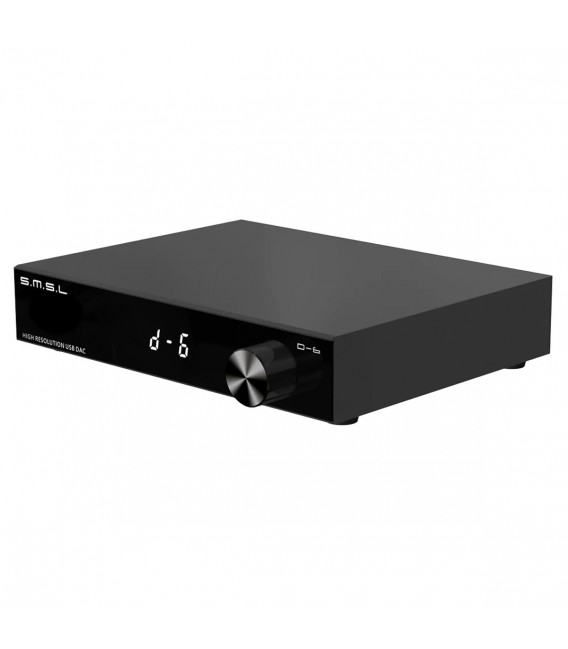Seen from a price performance perspective compared to buying a DAC, it makes no sense BUT consider the fun factor of building something yourself.

_____
I know you know that's the case, just mentioning it to the OP. It is basically impossible to build one like this, with its performance and functions at the price it is sold for:
179,00 €tax incl.
The D-6 joins SMSL's wide range of DACs, offering excellent performance for a contained price. It is equipped with two AKM AK4493S conversion chips and a second generation USB XMOS interface.

www.audiophonics.fr
@Blumlein 88 As I'm new in this field, I don't know if you are right or not, because I've absolutely not idea without a proper knowledge about DACs.
But, what I can tell if about what that FB group said te me about DACS: you can build DIY something that is better than commercial solution, because:
- you can choose chip, in this case you try to replicate TDA1541 without using the same amount of discrete components because you are using 8 x TDA1387 in parallel: this will reduce the distorsion rate of the conversion.
- you can choose a reclock that is way better than in commercial solution, like Ian Canada reclokers to reduce jitter
- you can choose best quality components, that are few, like condensers and resistors, hand crafted resistors by Charcroft, that will clean and purify interferences and distorsions
- you can choose to separate power supply (galvanic isolation)
- you can choose the power supply
- you can use Camilla DSP for free, to create audio processing pipelines for applications such as active crossovers or room correction
- you can modify settings in Raspberry, as you have the full control of the software like Moode or Volumio, and a lot of settings
So, you have something in hand that you can modify to accomplish everything you have in mind, and you can build something that can getting better and better.
smsl-d-6-dac is really good, as based on ak4493, that peoples in FB pages said that is one of the best that thay have testes, along with ESS9038Q2M and CS43198.
But when they tried TDA1387 they replaced all of those dacs and used it as reference dac, because sounds better.
In general, I heard that delta sigma is more modern design but r2r have more vintage/old style sound so a lot of people prefer it

What I've learned in this forum is that you should test to know which dac is better. So, I don't see the test for Protodac, until proven otherwise we cannot say whether it is actually better or worse than what you say. I don't understand how you can affirm with scientific certainty that this is so.
I'm a computer programmer, the only way that I know if my software is working are called unit testing and functional testing.
Unit testing is test each components separately, if every components works properly I've more chance that my software will work.
So, using this logic, I assume that to understand is one chip is better than another one I need to test it to prove that the conversion is better, I can't find such test, so I can't have any prove.
EDIT:
One thing I can't understand is why it bothers many that the signal has a different nuance and timbre, when the digital signal itself is different from the analogue one from the start. honestly, the idea I have of hifi is something that must be liked in terms of sound, but will never be similar to reality.
I have heard systems costing from 200 to 200,000 euros, no orchestra really resembles the one reproduced by speakers.
Perhaps trying to faithfully reproduce reality is not the right path, perhaps seeking a pleasant sound is more so. I once heard at San Fedele, a place where they have about seventy speakers all around a room, "acusmatic music", which play at the same time (speakers of a certain quality), playing a recording on a magnetic tape.
I've never heard such a vivid sound coming out of speakers, it was truly impressive.


